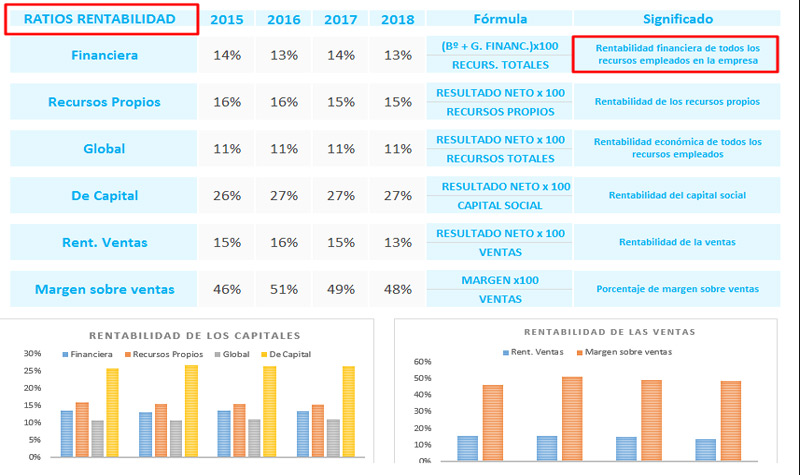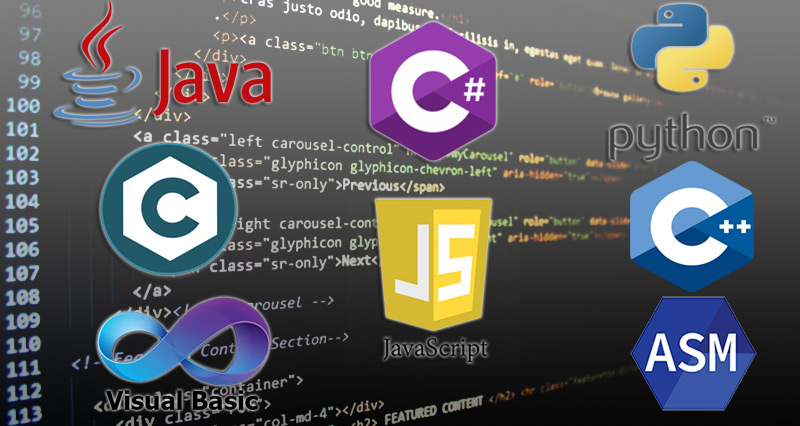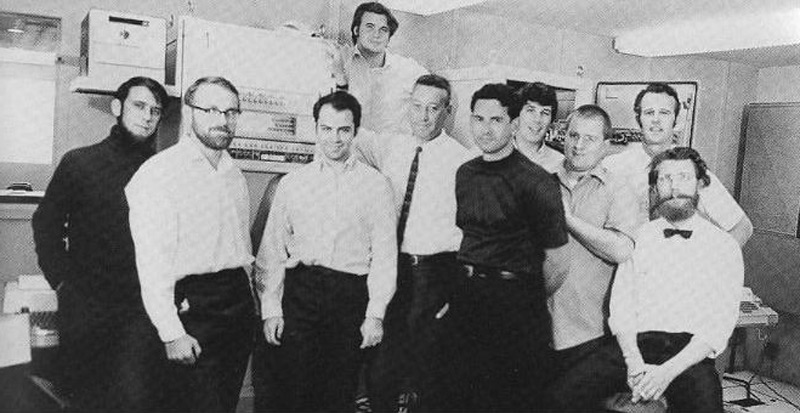
Index:
UPDATED ✅ Do you need to know how the process works to develop a computer program? ⭐ ENTER HERE ⭐ and discover everything about it ✅ EASY and FAST ✅
All the things we buy and consume are the byproduct of a production process that goes far beyond what we can notice with the naked eye as consumers. But the reality is that before being conceived, every article was just an idea, and materializing it is a long road with several phases..
With computer programs this is no different. The well-known software life cycle is a sample of themand makes it clear that certain methods and paradigms must be followed to create a program.
In this article we are going to teach you everything you need to know about the software life cycle. You will know the different phases of this process, and all the paradigms that surround it so that you understand how a program looks from the eyes of a developer.
What is the software life cycle and what does this process consist of?
The life cycle of a program or software is nothing more than the pragmatic model that a team of developers follows to create a digital product. This model is not unique, and the term is used in a more general way.since each team can follow its own path to develop software.
The truth is that the chosen model will largely determine the activities carried out during the process. This process is a long way that goes from the conception of the ideal software, the analysis of the problem and its intention, to the subsequent launch to the market. It is a whole thesis to determine why the software is necessary and its usefulness in the industry.
What are the stages of the life cycle of a program and what does each one consist of?
The life cycle of a program is a long process that can be compared to the production of a film. In both casesfirst you have a vague idea that is later shaped until you get a final result as close to what is expected as possible.
However, there are three stages that will always be present in its conception:
Planning
Planning is the first stage of software development. In it, the bases of the project are laid, the problem is analyzed and the ways in which the product will solve them are proposed. The development team is also chosen, and later the work schedule is established.
It is a basic stage in the production of any good or service, and in computer development it is one of the most important, since a large part of the final result will depend on it.
Implementation and testing
In the second phase, once you have clear ideas of what you want to achieve, the implementation of all of them begins. It is at this moment when all the work begins and the programmers do not stop until they have a prototype of the program for testing..
Testing is one of the most complex stages of the development of any program, since it is in it that it is put to the test. Each one of the functionalities will be tested to evaluate its performance in real conditions that it will have to face in its launch.
In this phase, test launches are usually carried out, which are popularly known as “betas” either “demos”, in which a small population of users uses the program to give their first impressions. The results of all this are so important that many programs They do not see the light of day due to the fact that they do not collect enough positive opinions from beta testers.
Launch and maintenance
Once the program is tested and guaranteed, the launch phase begins, which is basically putting it on the market so that it can be sold. Here the marketing team puts their knowledge to work to spread the material and get the expected users.
However, the most important part here is without a doubt the maintenance of the program, which implies that a development team is constantly detecting bugs or making improvements to it, which we constantly know as updates. This is extremely necessary since outdated software becomes obsolete in less than a year..
What are all the processes in software development?
The three phases explained above contain within them a series of more complex processes that individually are extremely important for software development.
Below we discuss each of them:
Collection of applications
Once the development team is assembled, what is known as requirements gathering begins. For this, an analysis of the main problem is carried out and requests are classified into three types; system requirements, user requirements, and functional requirements.
With all this, what is achieved is a clear idea of what the needs of the user who will use the program are, the demands of each of the functionalities that will be added to it, and the requirements of the program to perform each of these functions. In a way, it is like making a checklist of what is going to be solved, what needs to be done to solve it and what is needed to implement each solution.
Feasibility analysis

We are still in the planning phase. The feasibility study is an analysis that is carried out to perfectly idealize the user’s needs and above all to determine whether or not all these needs can be solved by the program. Also, It also asks if the program is really necessary or if it could become unnecessary..
Feasibility studies other things of great importance, such as whether or not it is economically profitable to carry out a project of such magnitude, as well as how impressive can become the software in its respective market. Once all these variables are put on the tableit is determined whether the development continues or not.
System Study
Once the project is approved, the last stage of the planning phase begins. In this step, what is carried out is a complete study of what is the best design to create a software with the previously established functions, in such a way that its development is as precise as possible. This is where you think about the interface, the functionalities and all the resources that will be needed to create the program..
Design
The design largely depends on the previous point. At this stage, the aesthetic and functional aspect of the program is considered, determining how and where each of the tools, colors and even the direct access favicon that will be installed on the user’s desktop can be activated. To do all this, they often conduct surveys among potential users, as well as other strategies..
Programming

Once the template of what the program should look like is known, the longest stage begins, which is its programming. Here there is not much to say without getting into a highly technical fieldthe important thing is that it is in this process that the software is written and coded.
Testing
Once you have the first version of the program, the testing phase begins. For this, “beta” releases can be made so that a community of users has access to the software and test it so that later they give a first impression of it.
Launch
If the program passes the tests, the pertinent improvements are made and it is officially launched, where it enters the market and begins to be commercialized. For this, it is generally delegate a team of marketing experts to make the project gain visibility.
Maintenance
Finally, it is necessary to delegate a team of programmers to constantly monitor the program to detect possible bugs or possible improvements that must be evaluated and then implemented in what is popularly known as “updates”.
What are the paradigms followed in the development of computer programs?
The entire life cycle of a program is mainly determined by the paradigm that is followed. The paradigms are a series of pre-established rules that are used by a team of developers to have a guide of the steps to follow to launch their project.
There are three types of paradigms, and here we present what they are:
Traditional
Throughout history, different models for creating computer programs have been developed. The first ones that were used at the beginning of this science were given the classification of “traditional”. There is no exact model that must be followed to the letter, but there is a series of instructions to create the best possible strategy.
Traditional models are characterized by drawing an orderly line with the steps that must be followed from start to finish. The problem with them is that if an error or failure is detected at an advanced stage in the early stages, the project must be restructuring.
object oriented
The object-oriented paradigm is one of the most used today and traces a path of three phases; classification, collection of requests and design, which are fundamental in the development of the program. But the most important feature of this is that the main idea is that the source code of the software can be reused to integrate into other more complex applications or create similar software.
That is why the “classification”, to determine in principle what the program will be. In this way, when determining it, for example, as a multimedia player, its source code can be used to create another player that inherits its most important characteristics, so that whoever takes the code can make their own arrangements to create a more powerful version or limited of it.
This simple idea completely changed the industry, especially with the release of open source tools that could be picked up by any novice programmer to do their own wonders, creating a highly competitive environment that gave rise to the development of new development techniques.
agile development
This paradigm is based on the idea of speeding up the software development process as much as possible. To do this, a large part of the processes mentioned above are simply eliminated or ignored., especially the most complex ones such as feasibility analysis or requirements gathering. With this in mind, the team can focus directly on programming and program design.
Another characteristic of this paradigm is that it seeks to solve user problems in the fastest and most practical way possible. This is the principle used by “one click” tools.which seek to minimize user influence, automating all processes as much as possible.
Currently this is the most used trend, although it is often combined with object-oriented methods that also work perfectly.
Under which models can the software life cycle be based?
What you have just learned are the paradigms, which are the ideals that are followed to create a model for the development of a program. These models also depend heavily on the planning of the development team, that is, each one structures them in their own way. Nevertheless, Certain models can be identified that have been so effective that they continue to be replicated today to achieve successful software:
waterfall model
This is one of the most widely used models of the traditional paradigm. As expected, it establishes a series of processes that must be carried out in a specific order, that is, it cannot advance until the previous process is finished.
In this sense, the following steps must be carried out:
- Collection of requirements.
- Software design.
- Software construction or implementation.
- Integration.
- Testing (or validation).
- Deployment (or installation).
- Maintenance.
Spiral
This is a traditional model that differs from the other in that it conducts risk analysis periodically during the program development stage. In this sense, the aforementioned processes continue to be carried out in the same order..
Code n’ Fix
Code and Correct is an agile development model that is based on the immediate creation of code skipping many processes such as risk analysis, design and others. In the end, As expected, errors will be found, which will be corrected until a clean version of the program is achieved..
Iterative
This is one of the oldest object-oriented development models known to date. It is based on prototyping, whose source code was later used to create another program or integrate it into a more advanced tool. In many cases, the prototypes obtained were so good that they were considered a fine productl.
This model also has traditional characteristics, such as the fact that a series of processes are also followed for its complete development: initialization, iteration and control list.
Developer team How are roles structured within a computer development group?

Throughout this article we have talked about the development team; those minds behind the creation of all those programs that make life easier for us as Internet users.
Next, we will tell you about the main roles within a team of software creators:
- Project manager: one of the most important roles because he is in charge of managing the entire project, being in charge of risk litigation, meeting deadlines and keeping total control of its costs.
- requirements analyst: It is precisely in charge of keeping track of all the requirements of the program, organizing them in such a way that any member of the team can access them for documentation.
- Programmer: they can be one or several. This is the workforce of the entire project, since it is the one in charge of writing the software code.
- Tester: designs each of the tests to which the program will be subjected after being written. You must have a deep knowledge of it, so you work hand in hand with the programmers.
- Architect: this is the brain in charge of determining which is the best language that can be used to write the software, as well as its structure.
Computing